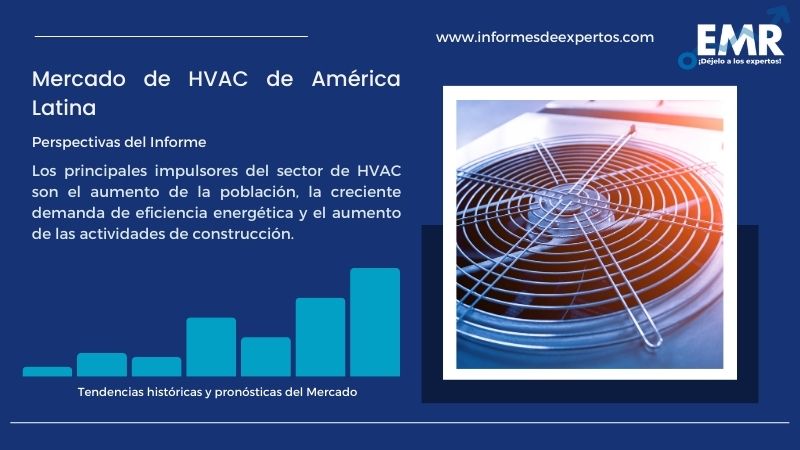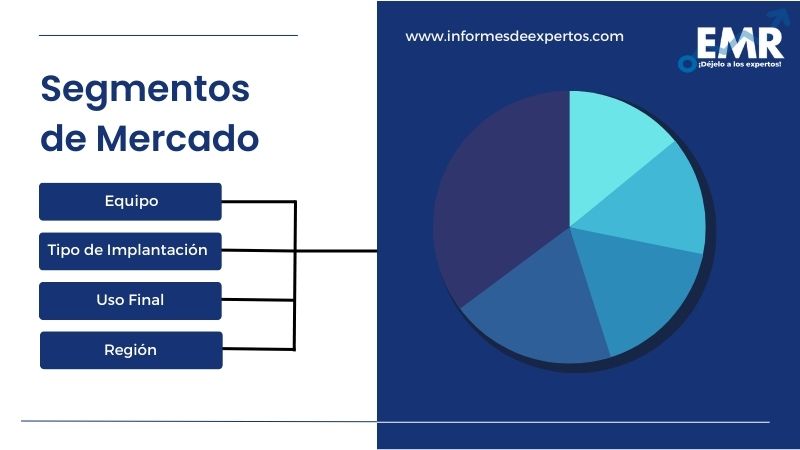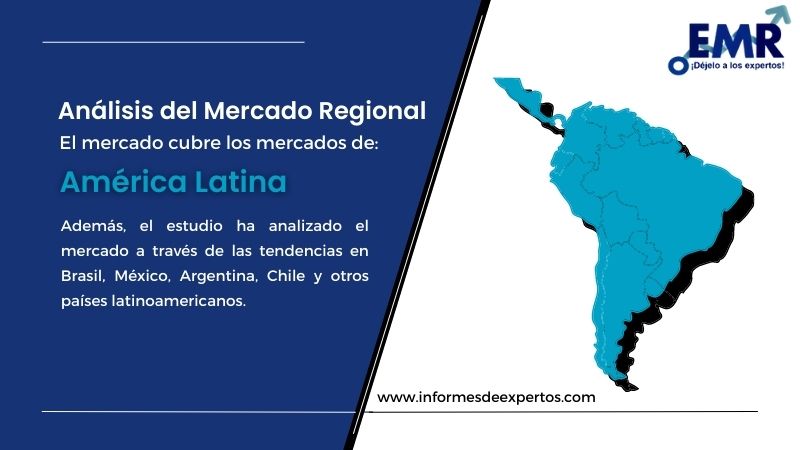Informes

Mercado Latinoamericano de HVAC – Por Equipo (Calefacción, Ventilación, Refrigeración); Por Tipo de Implantación (Nuevas Construcciones, Remodelaciones); Por Uso Final (Residencial, Comercial, Industrial); Por Región (Brasil, Argentina, México, Otros); Dinámica del Mercado y Panorama Competitivo
Perspectiva del Mercado Latinoamericano de HVAC
El mercado latinoamericano de HVAC alcanzó un valor de alrededor de USD 12,32 mil millones en 2025. Se prevé que el mercado crezca a una tasa de crecimiento anual compuesta del 4,9% entre 2026 y 2035, para alcanzar un valor de 18,88 mil millones de USD en 2035.

El término "HVAC" se refiere al conjunto de sistemas de calefacción, ventilación y aire acondicionado. Se refiere a muchos edificios, piezas de maquinaria y avances tecnológicos que mejoran el confort interior en lugares como los hogares, los lugares de trabajo, los espacios públicos y los sistemas de transporte manteniendo una temperatura agradable.
Se prevé que el mercado latinoamericano de HVAC se vea afectado positivamente por la creciente demanda de productos de eficiencia energética. La elección de calderas de condensación es uno de los factores clave que impulsan el mercado de equipos de HVAC. En las zonas con clima severo, los sistemas HVAC se utilizan tanto para la calefacción como para la refrigeración. Los dos principales sistemas de calefacción de los sistemas son el horno y los sistemas de caldera. La principal ventaja de los sistemas de caldera se basa en el calor radiante o por convección, que ofrece un calor constante con buena constancia de temperatura. Además, ventajas como la facilidad de mantenimiento, la mayor vida útil de las calderas de condensación y los controles de tecnología moderna deberían fomentar el crecimiento del mercado latinoamericano de climatización a lo largo del periodo de pronóstico.
A pesar de la imprevisible situación económica del país y de los acontecimientos políticos que están afectando a la confianza de los clientes, el mercado brasileño de AC se está expandiendo y posee la mayor cuota de mercado de HVAC. El aire acondicionado es una de las pocas categorías de productos electrodomésticos inteligentes de color blanco y marrón con una tendencia de ventas creciente. Lo mismo ocurre en México, donde el VRF también ha aumentado. La adopción de inversores, así como el uso de nuevos refrigerantes en enfriadoras y unidades residenciales, han aumentado drásticamente a pesar del mal ciclo económico, lo que ha hecho que los clientes estén más pendientes de los precios.
HVAC: Segmentación del Mercado

El segmento de equipos puede clasificarse a su vez en tipos como:
1. Calefacción
- Bombas de Calor
- Aire-aire
- Aire-agua
- Agua-agua
- Hornos
- Aceite
- Gas
- Eléctrico
- Otros
- Calderas
- Otros
2. Ventilación
- Unidades de Tratamiento de Aire
- Filtros y Purificadores de Aire
- Ventiladores
- Ventiladores Axiales
- Ventiladores Centrífugos
- Ventiladores de Flujo Cruzado
- Otros
- Deshumidificadores y Humidificadores
- Otros
3. Refrigeración
- Acondicionadores de Aire Unitarios
- Split
- Packaged
- Sistemas VRF
- Resfriadores
- Enfriadores
- Torres de Refrigeración
- Evaporativo
- Enfriamiento en Seco
- Híbrido
- Otros
En función del tipo de implantación, el mercado puede segmentarse en:
- Nuevas Construcciones
- Remodelaciones
Según el uso final, el mercado se segmenta en:
- Residencial
- Comercial
- Industrial
Además, el estudio ha analizado el mercado a través de las tendencias en Brasil, México, Argentina, Chile y otros países latinoamericanos.

El cambio en las preferencias de los consumidores y los avances tecnológicos impulsan el mercado latinoamericano de HVAC
El aumento de las exportaciones de compresores de países como México, Brasil y Argentina podría contribuir a la expansión del mercado latinoamericano de HVAC. Durante el periodo de pronóstico, se prevé que los envíos de sistemas de aire acondicionado se vean impulsados por la rápida urbanización y el aumento del gasto en infraestructuras. También se estima que la expansión del mercado objetivo se acelere en los próximos años por el aumento de los ingresos disponibles en los países emergentes y la mejora del nivel de vida.
Además, se prevé que las leyes que regulan la eficiencia energética y la creciente concienciación de los consumidores impulsen el crecimiento del mercado. Existe una tendencia en varios países de la región a desarrollar iniciativas nacionales de eficiencia energética y a ofrecerles apoyo normativo y jurídico.
También se prevé que el crecimiento del mercado latinoamericano de sistemas de aire acondicionado se vea impulsado por los avances tecnológicos y el desarrollo de nuevos productos. Como resultado de la gran eficiencia energética del sistema split HVAC en comparación con otros tipos, también proporciona un mantenimiento mínimo y servicios de valor añadido. El creciente uso de VRF en la zona es otro factor que impulsa la expansión del mercado de HVAC.
Actores clave del Industria de HVAC
El informe ha examinado el panorama competitivo, incluyendo detalles exhaustivos sobre los principales actores que dirigen el crecimiento del sector.
Algunos de los principales actores mundiales son Heinen & Hopman Engineering, CALMET, DAIKIN INDUSTRIES, Ltd., Carbon Heating & Air Conditioning, Silicon Engineering Consultants Pvt Ltd, Haier Smart Home Co., Ltd., Aire Solution y otros.
Este estudio realizado por Informes de Expertos (IDE) ofrece un análisis detallado del mercado latinoamericano de sistemas de climatización, evalúa las tendencias actuales y futuras, las oportunidades y los retos, incluye un análisis de la cadena de valor, perfiles de empresas clave y una evaluación en profundidad basada en el modelo de las cinco fuerzas de Porter, junto con un análisis DAFO.
Alcance del Mercado:
|
Características del Informe |
Detalles |
|
Año Base de la Estimación: |
2025 |
|
Datos Históricos: |
2019-2025 |
|
Datos de Pronóstico: |
2026-2035 |
|
Alcance del Informe: |
Tendencias Históricas y Previsiones del Mercado, Impulsores y Limitantes de
|
|
Desglose por Equipo: |
|
|
Desglose por |
|
|
Desglose por Uso Final: |
|
|
Desglose por País: |
|
|
Dinámica del Mercado: |
|
|
Panorama Competitivo: |
|
|
Empresas Cubrietas: |
|
Informes de tendencias:
Mercado Latinoamericano de Productos para el Cuidado del Bebé
Mercado Latinoamericano de Proteína Vegetal
Mercado Latinoamericano de Scooters Eléctricos
Mercado Latinoamericano de Snacks Saludables
Mercado Latinoamericano del Cuidado Avanzado de Heridas
*En Informes de Expertos siempre nos esforzamos por brindarle la información más reciente. Los números de artículo son solo indicativos y pueden diferir del informe real.
Language of the Report – English
Sin embargo, el informe puede estar disponible en español por un costo adicional.
1 Preface
2 Report Coverage – Key Segmentation and Scope
3 Report Description
3.1 Market Definition and Outlook
3.2 Properties and Applications
3.3 Market Analysis
3.4 Key Market Players
4 Key Assumptions
5 Executive Summary
5.1 Overview
5.2 Key Drivers
5.3 Key Developments
5.4 Competitive Structure
5.5 Key Industrial Trends
6 Snapshot
6.1 Latin America
6.2 By Country
7 Industry Opportunities and Challenges
8 Latin America HVAC Market Analysis
8.1 Key Industry Highlights
8.2 Latin America HVAC Historical Market (2019-2025)
8.3 Latin America HVAC Market Forecast (2026-2035)
8.4 Latin America HVAC Market by Equipment
8.4.1 Heating
8.4.1.1 Market Share
8.4.1.2 Historical Trend (2019-2025)
8.4.1.3 Forecast Trend (2026-2035)
8.4.1.4 Breakup by Type
8.4.1.4.1 Heat Pumps
8.4.1.4.2 Breakup by Type
8.4.1.4.2.1 Air-to-air
8.4.1.4.2.2 Air-to-water
8.4.1.4.2.3 Water-to-water
8.4.1.4.3 Furnaces
8.4.1.4.3.1 Oil
8.4.1.4.3.2 Gas
8.4.1.4.3.3 Electric
8.4.1.4.3.4 Others
8.4.1.4.4 Boilers
8.4.2 Ventilation
8.4.2.1 Market Share
8.4.2.2 Historical Trend (2019-2025)
8.4.2.3 Forecast Trend (2026-2035)
8.4.2.4 Breakup by Type
8.4.2.4.1 Air-Handling Units
8.4.2.4.2 Air Filters and Purifiers
8.4.2.4.3 Ventilation Fans
8.4.2.4.3.1 Breakup by Type
8.4.2.4.3.1.1 Crossflow Fans
8.4.2.4.3.1.2 Axial Fans
8.4.2.4.3.1.3 Centrifugal Fans
8.4.2.4.3.1.4 Others
8.4.2.4.4 Dehumidifiers and Humidifiers
8.4.2.4.5 Others
8.4.3 Cooling
8.4.3.1 Market Share
8.4.3.2 Historical Trend (2019-2025)
8.4.3.3 Forecast Trend (2026-2035)
8.4.3.4 Breakup by Type
8.4.3.4.1 Unitary Air Conditioners
8.4.3.4.1.1 Breakup by Type
8.4.3.4.1.1.1 Split
8.4.3.4.1.1.2 Packaged
8.4.3.4.2 VRF Systems
8.4.3.4.3 Chillers
8.4.3.4.4 Coolers
8.4.3.4.5 Cooling Towers
8.4.3.4.5.1 Breakup by Type
8.4.3.4.5.1.1 Evaporative
8.4.3.4.5.1.2 Dry cooling
8.4.3.4.5.1.3 Hybrid
8.4.3.4.6 Others
8.5 Latin America HVAC Market by Implementation Type
8.5.1 New Constructions
8.5.1.1 Market Share
8.5.1.2 Historical Trend (2019-2025)
8.5.1.3 Forecast Trend (2026-2035)
8.5.2 Retrofits
8.5.2.1 Market Share
8.5.2.2 Historical Trend (2019-2025)
8.5.2.3 Forecast Trend (2026-2035)
8.6 Latin America HVAC Market by End Use
8.6.1 Residential
8.6.1.1 Market Share
8.6.1.2 Historical Trend (2019-2025)
8.6.1.3 Forecast Trend (2026-2035)
8.6.2 Commercial
8.6.2.1 Market Share
8.6.2.2 Historical Trend (2019-2025)
8.6.2.3 Forecast Trend (2026-2035)
8.6.3 Industrial
8.6.3.1 Market Share
8.6.3.2 Historical Trend (2019-2025)
8.6.3.3 Forecast Trend (2026-2035)
8.7 Latin America HVAC Market by Country
8.7.1 Market Share
8.7.1.1 Brazil
8.7.1.2 Argentina
8.7.1.3 Mexico
8.7.1.4 Others
9 Regional Analysis
9.1 Brazil
9.1.1 Historical Trend (2019-2025)
9.1.2 Forecast Trend (2026-2035)
9.2 Argentina
9.2.1 Historical Trend (2019-2025)
9.2.2 Forecast Trend (2026-2035)
9.3 Mexico
9.3.1 Historical Trend (2019-2025)
9.3.2 Forecast Trend (2026-2035)
10 Market Dynamics
10.1 SWOT Analysis
10.1.1 Strengths
10.1.2 Weaknesses
10.1.3 Opportunities
10.1.4 Threats
10.2 Porter’s Five Forces Analysis
10.2.1 Supplier’s Power
10.2.2 Buyers Powers
10.2.3 Threat of New Entrants
10.2.4 Degree of Rivalry
10.2.5 Threat of Substitutes
10.3 Key Indicators for Demand
10.4 Key Indicators for Price
11 Value Chain Analysis
12 Competitive Landscape
12.1 Market Structure
12.2 Key Company Profiles
12.2.1 Heinen & Hopman Engineering
12.2.1.1 Company Overview
12.2.1.2 Product Portfolio
12.2.1.3 Demographic Reach and Achievements
12.2.1.4 Certifications
12.2.2 CALMET
12.2.2.1 Company Overview
12.2.2.2 Product Portfolio
12.2.2.3 Demographic Reach and Achievements
12.2.2.4 Certifications
12.2.3 DAIKIN INDUSTRIES, Ltd.
12.2.3.1 Company Overview
12.2.3.2 Product Portfolio
12.2.3.3 Demographic Reach and Achievements
12.2.3.4 Certifications
12.2.4 Carbon Heating & Air Conditioning
12.2.4.1 Company Overview
12.2.4.2 Product Portfolio
12.2.4.3 Demographic Reach and Achievements
12.2.4.4 Certifications
12.2.5 Silicon Engineering Consultants Pvt Ltd
12.2.5.1 Company Overview
12.2.5.2 Product Portfolio
12.2.5.3 Demographic Reach and Achievements
12.2.5.4 Certifications
12.2.6 Haier Smart Home Co., Ltd.
12.2.6.1 Company Overview
12.2.6.2 Product Portfolio
12.2.6.3 Demographic Reach and Achievements
12.2.6.4 Certifications
12.2.7 Aire Solution
12.2.7.1 Company Overview
12.2.7.2 Product Portfolio
12.2.7.3 Demographic Reach and Achievements
12.2.7.4 Certifications
12.2.8 Others
13 Industry Events and Developments
*The list of players in the competitive landscape section can be customised or made more exhaustive based on your specific requirements.*
¿Cuál fue el tamaño del mercado latinoamericano de HVAC en 2025?
En 2025, el mercado latinoamericano de HVAC alcanzó un valor de casi 12,32 mil millones de dólares.
¿Cuál es la tasa de crecimiento del mercado de HVAC en América Latina durante 2026-2035?
Se prevé que el mercado latinoamericano de HVAC crezca a una CAGR del 4,9% entre 2026 y 2035.
¿Cuáles son los principales factores que influyen en el mercado de la HVAC en América Latina?
Los principales impulsores del sector son el aumento de la población, la creciente demanda de eficiencia energética y el aumento de las actividades de construcción.
¿Cuáles son las principales tendencias de la industria en el mercado latinoamericano de HVAC?
Las principales tendencias del mercado que influyen en el crecimiento del mercado de HVAC incluyen el aumento de los patrones de construcción inteligente y el crecimiento de los edificios con cero emisiones.
¿Cuál fue el impacto de la pandemia de COVID 19 en el mercado de HVAC en América Latina?
La pandemia alteró la cadena de suministro de equipos, lo que provocó una ruptura en las ventas.
¿Cuáles son los principales tipos de equipos del sector de HVAC?
En el sector, los principales tipos de equipos son los de calefacción, ventilación y refrigeración.
¿Cuáles son los principales tipos de implementación de HVAC en el mercado?
En el mercado, los principales tipos de implementación de HVAC son las nuevas construcciones y las remodelaciones.
¿Cuáles son los principales segmentos de uso final del sector de HVAC?
En función de los segmentos de uso final, el sector se divide en residencial, comercial e industrial.
¿Quiénes son los principales actores del sector de HVAC, según el informe?
Los principales actores del sector de HVAC son Heinen & Hopman Engineering. CALMET, DAIKIN INDUSTRIES, Ltd., Carbon Heating & Air Conditioning, Silicon Engineering Consultants Pvt Ltd, Haier Smart Home Co., Ltd., y Aire Solution, entre otros.
¿Cuáles son las principales regiones analizadas según el mercado de HVAC?
Brasil, Argentina, México y otros países latinoamericanos son las principales regiones analizadas en el informe de IDE.
¿Cuál es la perspectiva de pronóstico del mercado latinoamericano de HVAC para 2026-2035?
Se estima que el mercado latinoamericano de HVAC registrará un fuerte crecimiento durante el periodo de pronóstico de 2026-2035 para alcanzar los 18,88 mil millones de USD en 2035.
Excel Data Set
USD1799
-
Datos completos en formato Excel para un usuario
-
Impresión no permitida
-
Entrega por Email
-
Personalización limitada gratuita (pre-venta)Soporte de analista post ventaDescuento del 50% en la Próxima ActualizaciónUsuario Único
USD3199
USD2999-
Restringido a un usuario
-
Solo una impresión
-
Disponible en PDF
-
Personalización limitada gratuita (pre-venta)Soporte de analista post ventaDescuento del 50% en la Próxima ActualizaciónCinco Usuarios
USD4199
USD3999-
Restringido a cinco usuarios
-
Una impresión por usuario
-
Disponible en PDF
-
Personalización limitada gratuita (pre-venta)
-
Soporte de analista post venta
-
Descuento del 50% en la Próxima Actualización
Multiusuario
USD5199
USD4999-
Usuarios ilimitados dentro de la organización
-
Impresiones ilimitadas
-
Disponible en PDF
-
Personalización limitada gratuita (pre-venta)
-
Soporte de analista post venta
-
Descuento del 50% en la Próxima Actualización
Póngase en Contacto¿Cualquier Pregunta? Hable con un Analista
Solicitar una MuestraVer una Muestra
Solicitar PersonalizaciónSe le olvidó algo? Pregunte Ahora
¿Por qué Informes de Expertos?La Gente Adecuada
Somos técnicamente excelentes, estratégicos, prácticos, experimentados y eficientes; nuestros analistas son cuidadosamente seleccionados en función de tener los atributos correctos para trabajar con éxito y ejecutar proyectos basados en sus expectativas.
Metodología Correcta
Aprovechamos nuestra tecnología de vanguardia, nuestro acceso a bases de datos confiables y nuestro conocimiento de los modelos actuales utilizados en el mercado para ofrecerle soluciones de investigación que se adapten a sus necesidades y lo pongan a la vanguardia.
Precio Justo
Realizamos una investigación exhaustiva y de calidad superior a precios razonables, inigualables y que demuestran nuestra comprensión de su estructura de recursos. Además, ofrecemos descuentos atractivos en nuestros próximos informes.
Apoyo Adecuado
Nuestro equipo de analistas expertos está a su disposición entera para ofrecerle resultados óptimos personalizados para satisfacer sus necesidades precisas dentro del plazo especificado y ayudarlo a comprender mejor la industria.
Informes SimilaresEl mercado está impulsado por múltiples factores. Las regulaciones e incentivos gubernamentales que promueven la calefacción energéticamente eficiente fomentan la adopción, mientras que la rápid...
Las sólidas políticas gubernamentales de electrificación, la rápida urbanización, la automatización industrial y la expansión de la combinación de energía renovable están impulsando el creci...
La demanda creciente de desarrollo energético sostenible y el aumento de las actividades de construcción son las principales tendencias del mercado de intercambiadores de calor en América Latina.
El crecimiento del mercado mundial de altavoces está impulsado por la creciente popularidad de los altavoces portátiles, los avances tecnológicos en los productos electrónicos y el aumento de la p...
El mercado de refrigeradores en Brasil está impulsado por el aumento de los ingresos disponibles, el incremento de la compra de electrodomésticos y la creciente demanda de refrigeradores por parte d...
Newsletter





